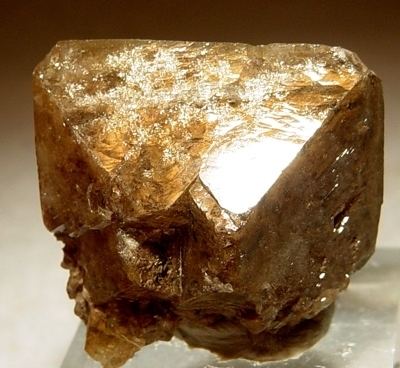Category Organic minerals Strunz classification 10.AC.05 Space group I41/acd | Formula(repeating unit) Al2[C6(COO)6]·16H2O Crystal system Tetragonal | |
 | ||
Crystal class Ditetragonal dipyramidal (4/mmm)H-M symbol: (4/m 2/m 2/m) | ||
Mellite, also called honeystone, is an unusual mineral being also an organic chemical. Chemically identified as an aluminium salt of mellitic acid; that is, aluminium benzene hexacarboxylate hydrate, with the chemical formula Al2C6(COO)6·16H2O.
It is a translucent honey-coloured crystal which can be polished and faceted to form striking gemstones. It crystallizes in the tetragonal system and occurs both in good crystals and as formless masses. It is soft with a Mohs hardness of 2 to 2.5 and has a low specific gravity of 1.6.
It was discovered originally in 1789 at Artern in Thuringia in Germany it has subsequently also been found in Russia, Austria, the Czech Republic, and Hungary. It was named from the Greek μέλι meli "honey", in allusion to its color.
It is found associated with lignite and is assumed to be formed from plant material with aluminium derived from clay.
